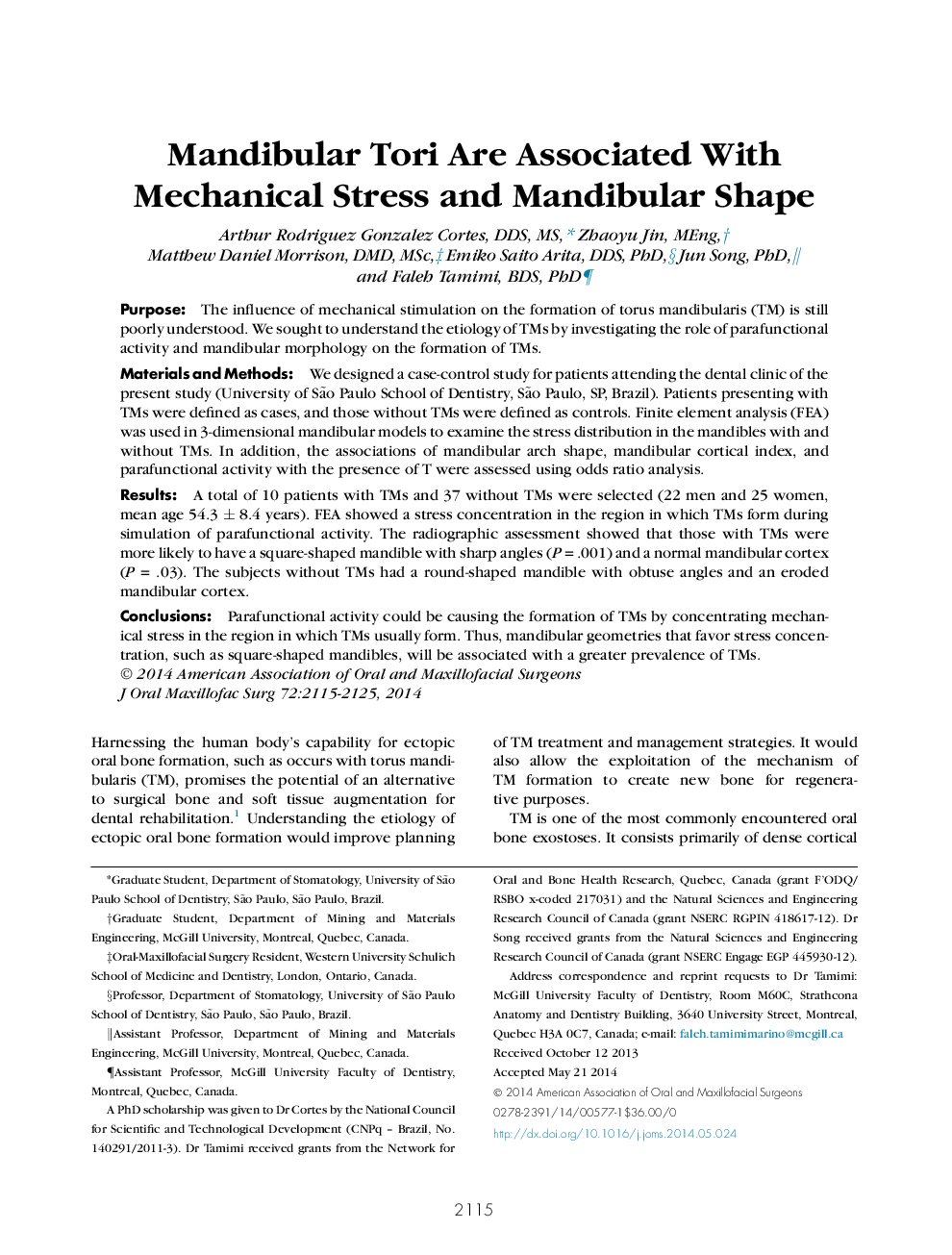| Article ID | Journal | Published Year | Pages | File Type |
|---|---|---|---|---|
| 3157828 | Journal of Oral and Maxillofacial Surgery | 2014 | 11 Pages |
PurposeThe influence of mechanical stimulation on the formation of torus mandibularis (TM) is still poorly understood. We sought to understand the etiology of TMs by investigating the role of parafunctional activity and mandibular morphology on the formation of TMs.Materials and MethodsWe designed a case-control study for patients attending the dental clinic of the present study (University of São Paulo School of Dentistry, São Paulo, SP, Brazil). Patients presenting with TMs were defined as cases, and those without TMs were defined as controls. Finite element analysis (FEA) was used in 3-dimensional mandibular models to examine the stress distribution in the mandibles with and without TMs. In addition, the associations of mandibular arch shape, mandibular cortical index, and parafunctional activity with the presence of T were assessed using odds ratio analysis.ResultsA total of 10 patients with TMs and 37 without TMs were selected (22 men and 25 women, mean age 54.3 ± 8.4 years). FEA showed a stress concentration in the region in which TMs form during simulation of parafunctional activity. The radiographic assessment showed that those with TMs were more likely to have a square-shaped mandible with sharp angles (P = .001) and a normal mandibular cortex (P = .03). The subjects without TMs had a round-shaped mandible with obtuse angles and an eroded mandibular cortex.ConclusionsParafunctional activity could be causing the formation of TMs by concentrating mechanical stress in the region in which TMs usually form. Thus, mandibular geometries that favor stress concentration, such as square-shaped mandibles, will be associated with a greater prevalence of TMs.
